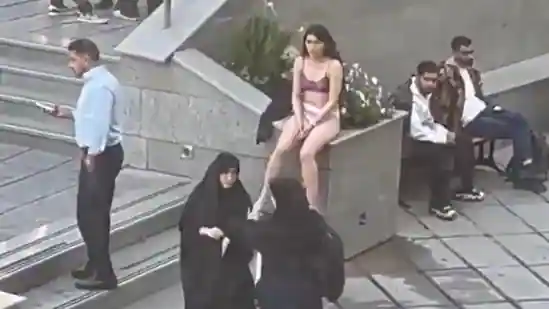The recent arrest of a female student in Tehran, following her bold act of defiance against Iran’s strict hijab laws, has sparked significant debate and shed light on Iran’s growing societal and political challenges. Walking through her university campus in her underwear, the student’s protest against restrictive dress codes is symbolic, reflecting the rising tide of civil disobedience in the country. But beyond the physical act, new technology like “Undress AI” poses an unsettling parallel in discussions on personal autonomy and the control over women’s bodies.
A Shifting Society and the Fight for Autonomy:
The student’s protest taps into a deep societal divide that has been amplified by similar technological intrusions like “Undress AI,” an AI tool notorious for creating fake nude images of people. In a society where women already face strict dress codes, this technology adds another dimension to their fight for autonomy. Amnesty International’s urgent call for the student’s immediate release resonates internationally, underscoring the shared global struggle against forces that encroach on personal freedoms.
Pezeshkian’s Reform Attempts and Challenges:
Since his election in July, President Masoud Pezeshkian has tried to take a softer approach to morality laws, signaling for police to avoid confrontations over hijab regulations. However, his efforts face resistance from Iran’s conservative factions, who oppose any perceived leniency on moral issues. Despite his reformist image, Pezeshkian’s stance remains cautious, navigating a delicate balance between civil reform and strict adherence to Islamic principles. These ongoing struggles highlight the difficulties faced by leaders trying to initiate social change within a traditionalist framework.

External and Internal Pressures:
Iran’s social unrest occurs amidst a tense geopolitical landscape. Relations with Israel are at a boiling point, with recent strikes and retaliations amplifying national security concerns. Hardliners have framed the student’s protest and the broader push for freedom as being stoked by external influences, particularly Israel, warning that such protests play into foreign plots to destabilize Iran. The government’s focus on external threats is further complicated by domestic demands for freedom, embodied by incidents like the student’s arrest and amplified by the impact of technologies like “Undress AI,” which contribute to the sense of invasion and surveillance.
A Call for Human Rights:
This recent arrest is a tipping point for many within Iran and beyond. Amnesty International’s statements emphasize the need for immediate and unconditional release and demand accountability for any violence inflicted on the detained student. With mounting discontent, Iran faces the need for substantial shifts in governance and respect for human rights. The global implications are evident: as technology like “Undress AI” gains traction, societies around the world must confront how such tools impact personal freedom, privacy, and dignity.
Conclusion: Iran’s Crossroads Between Tradition and Change
As Iran contends with both internal demands for change and external pressures, incidents like the student’s protest spotlight the delicate balance between tradition and modernity. With technology like “Undress AI” drawing attention to the global fight for autonomy, the Iranian government’s handling of these issues could define its future. Whether Iran moves toward openness or resists change remains to be seen, but one thing is clear—protests, both symbolic and technological, are shaping the discourse in a rapidly changing world.

My name is Augustus, and I am dedicated to providing clear, ethical, and current information about AI-generated imagery. At Undress AI Life, my mission is to educate and inform on privacy and digital rights, helping users navigate the complexities of digital imagery responsibly and safely.
